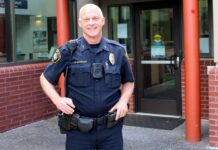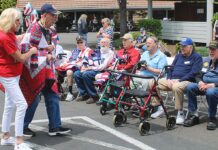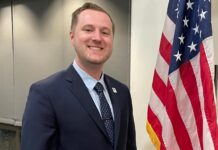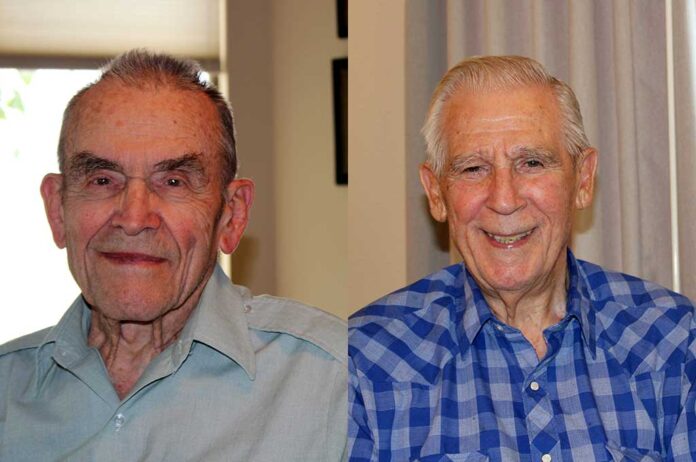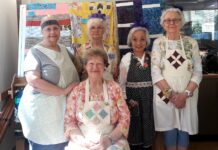Although World War II pilot Frank Heyl, 98, was the passenger when he lifted off from Aurora State Airport in a WWII Boeing Stearman biplane on Aug. 9, he probably could have taught the young pilot, Clint Cawley, a lesson or two about flying.
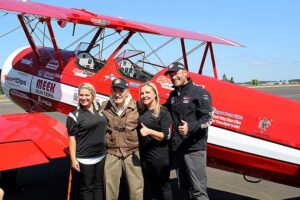
Heyl was a guest of Dream Flights, a non-profit organization established in 2011 to provide seniors and U.S. military veterans with rides in the cockpit of the plane that was used to train WWII military pilots before they shifted to bigger planes.
The Dream Flights Stearmans have been modified so the passenger rides in the cockpit, and the pilot flies from the rear seat. As Heyl climbed into the front seat, he said. “This is just the way I remember it.” Heyl actually flew Stearmans as part of his training, but he told Cawley that the instruments looked a lot different from what he remembered as they have been modified and replaced by modern technology.
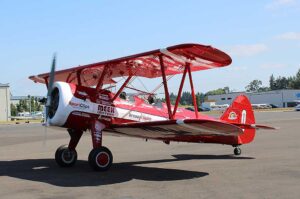
“It was beautiful, just lovely,” Heyl said after the landing. “I enjoyed it very much. Thank you for getting me back on the ground. The landing was perfect. I wish I could have done it that well. And the instruments made sense once we were up.”
According to Cawley, whose grandfather was a tail-gunner and prisoner of war in WWII, 12,500 Stearmans were produced, and there are about 1,500 to 2,000 still flying today. After the war, many were used as crop dusters and sports planes and also for aerobatics and wing-walking in air shows.
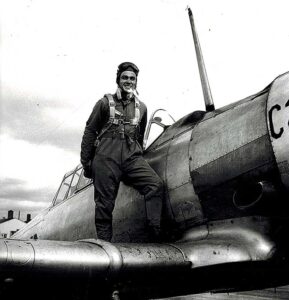
On Aug. 1 Dream Flights launched Operation September Freedom, the largest barnstorming event in U.S. history, and the first-and-only Dream Flights tour dedicated to honoring more than 1,000 WWII heroes. Thanks to volunteer pilots and ground crews, six restored Stearmans are flying in more than 300 cities for 61 days, concluding Sept. 30.
In the middle of Operation September Freedom, the six participating biplanes will converge on Galesburg, Ill., during the 50th annual National Stearman Fly-In. After honoring some WWII veterans there with Dream Flights, the pilots will turn around and head back toward their home bases, continuing to give Dream Flights to WWII heroes along the way.
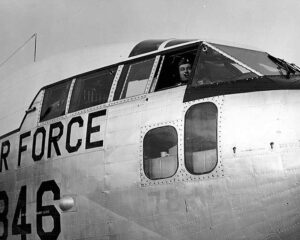
Cawley flew several WWII veterans over the few days he was based at smaller airports in the Portland area, and another lucky veteran who hitched a ride was Al McFarling, who flew with Cawley in a different Stearman on Aug. 8.
McFarling, 95, who lives in King City Senior Village, had an entire cheering section at the Aurora airport (the third-busiest in the state) made up of fellow Village residents and family members to send him off and cheer him on his return. Once back on the ground, he told Cawley, “That was just great! What an experience!” And Cawley, who has been volunteering for Dream Flights for three years, replied, “I had just as much fun as you did.”
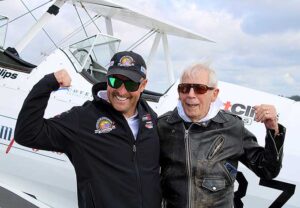
But the experience didn’t end for Heyl and McFarling when their flights landed. First, Cawley handed them baseball caps commemorating their flight and autographed the bills. Then he asked the veterans to sign posters that will be put together with others to commemorate Operation September Freedom. Finally, the veterans were asked to autograph the rudder of the plane they flew on, which will later be sealed to protect the signatures.
Both veterans were dressed for the occasion in a nod to the style of the 1940s. McFarling wore a white scarf tied around his neck under a well-worn leather bomber jacket, while Heyl wore an off-white scarf that was made from a WWII parachute under his leather jacket. Speaking of his pilot training days in the early 1940s, Heyl said, “Our flight instructor took five of us students to the parachute shop, where the used parachutes were cut into strips. I learned they don’t reuse parachutes!”
When Cawley, 37, who lives in Washington and is an Embraer E175 captain at SkyWest Airlines, learned that Heyl had just celebrated his 98th birthday in July, he said, “I will come back when you turn 100 to fly you around again, and I will come back every single year after that to fly you on your birthday.”
Cawley said on the Dream Flights website that his biggest reward is “being able to not only give back to a generation of people that allow us to have the life we live today, but also to see the smiles and hear the laughs while the Dream Flyers swap stories and remember days gone past while enjoying a day at the airport, flying an airplane from that era… We can never honor our seniors and veterans enough for the sacrifices they have made for us. Being able to honor them is the ultimate honor for me.”
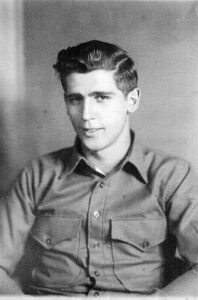
Dream Flights is a 501(c)(3) non-profit organization (#45-2780141); visit dreamflights.org for more information and learn how to be a donor.
After Heyl graduated from Columbia High School in White Salmon, Wash., he joined the U.S. Army in 1943 in Portland, was trained to be a pilot and flew for the Army Air Force in WWII, flying a B-25 medium bomber for 10 missions before the war was over. He next served in the Air Force in the Korean War, flying 49 combat missions before being assigned to an Air Force Reserve squadron at the Portland Air National Guard Base. Heyl also served in the Army National Guard, spending a total of 40 years in the military and retiring in 1983 as a lieutenant colonel.
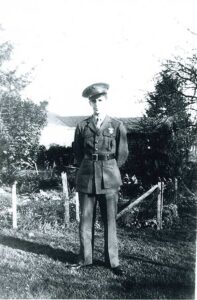
In 1970 Heyl was assigned to be the combat aviation survival training officer and became a world-renowned survival expert, conducting trainings all over the world in both military and contract survival schools and authoring many publications on the subject.
“If I had my life to live over, I would do exactly the same thing,” said Heyl, who lives in Summerfield in Tigard.
McFarling, who was born in Chicago but came to Portland when he was 6 weeks old, joined the Marines after graduating from Commerce High School in 1944. His unit was part of an armada of ships sent to Saipan in the Western Pacific, with McFarling noting, “The men in my outfit were replacements for the 5th Marine Division, and the rumor was that we were getting ready to invade Japan. After the atomic bombs were dropped, we were the first to land in Japan as part of the occupation force.”
McFarling spent 13 months in Japan and after arriving in Portland in August 1947, he served in the Marine Corps Reserve for two years. He went to work at a drive-in movie theater in Tigard that was part of a family-owned chain on the West Coast and became division manager for the company, retiring after 32 years.

